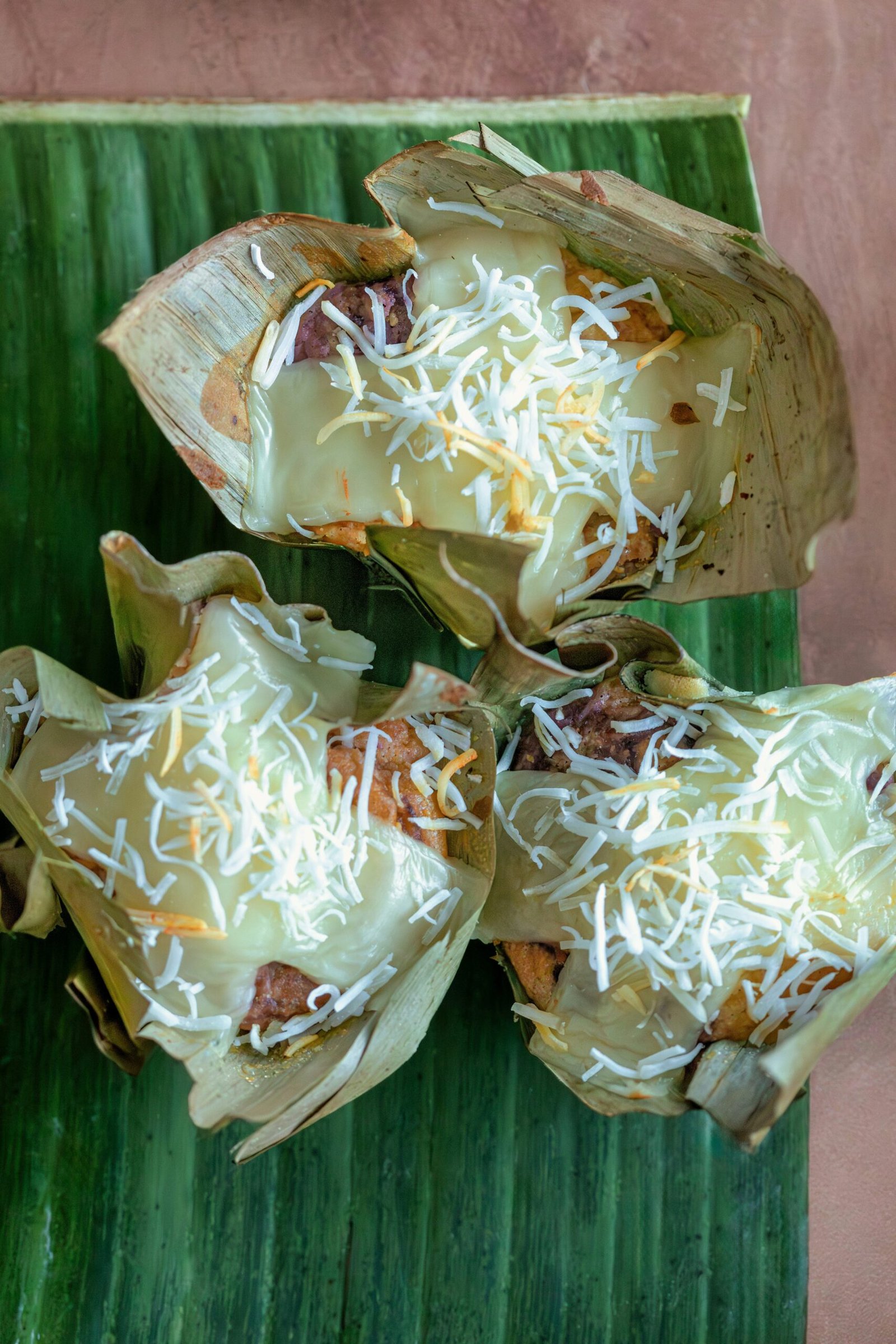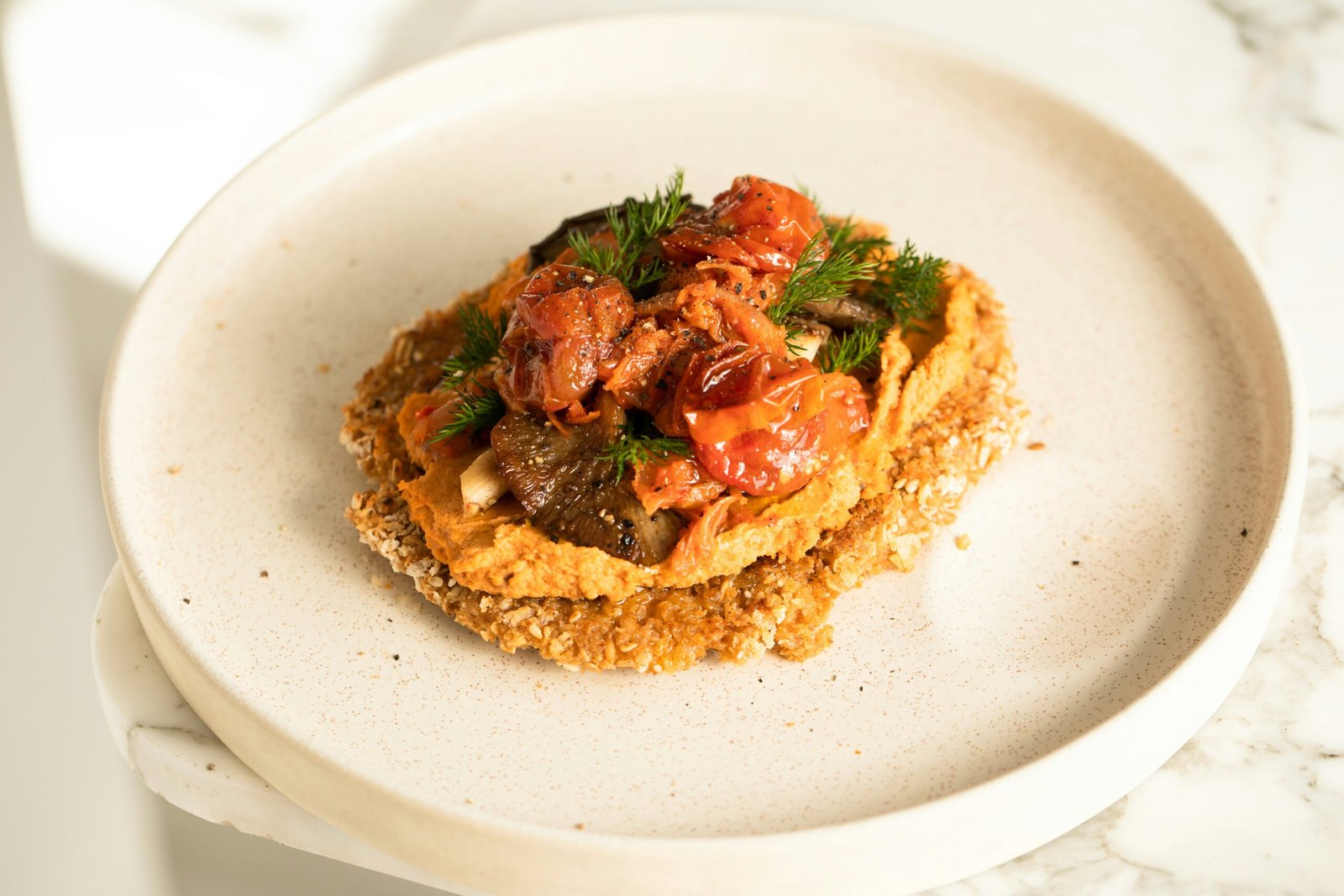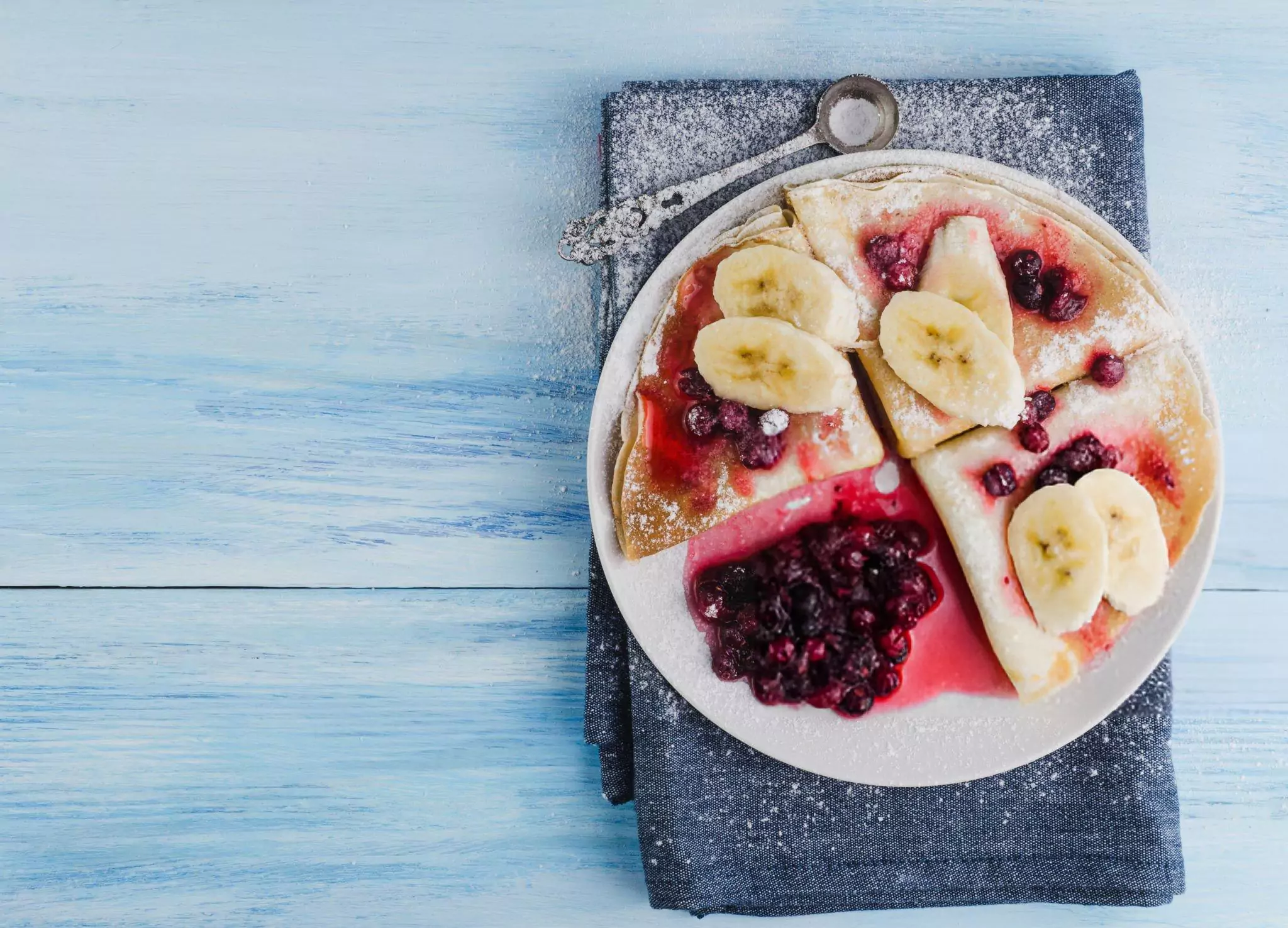Introduction to Plant-Based Protein
Protein plays a fundamental role in maintaining overall health, contributing to muscle growth, tissue repair, and the production of enzymes and hormones. While animal products have long been considered the primary source of protein, plant-based proteins offer a viable and nutritious alternative. Incorporating a variety of plant-based protein sources into one’s diet not only supports health but also aligns with ethical and environmental considerations.
One common misconception is that vegan and vegetarian diets do not provide sufficient protein. However, numerous plant-based foods are rich in this essential nutrient, making it entirely feasible to meet protein needs without relying on animal products. Foods such as legumes, nuts, seeds, whole grains, and soy products are excellent sources of plant protein. For instance, lentils are not only high in protein but also provide dietary fiber, vitamins, and minerals, contributing to a well-rounded meal.
Adopting a plant-based lifestyle can also lead to improved health outcomes. Diets rich in plant protein have been associated with lower risks of chronic diseases, including heart disease, type 2 diabetes, and certain cancers. Moreover, plant-based options tend to be lower in saturated fat and cholesterol, making them heart-healthy alternatives. Furthermore, the inclusion of a diverse array of protein sources can enhance nutrient intake, ensuring that individuals consume a broad spectrum of vitamins and minerals.
In summary, integrating plant-based proteins into one’s diet presents a multitude of health benefits while dispelling the myth that meat is the only viable protein source. As we explore these ten tasty vegan and vegetarian dinner recipes designed to be protein-packed, we will demonstrate how deliciously satisfying a plant-based lifestyle can truly be.
Chickpea Curry with Spinach
Chickpea curry with spinach is a delightful and nutritious dish that highlights the health benefits and flavor-enhancing properties of various spices. Chickpeas, also known as garbanzo beans, are an excellent source of plant-based protein, making them a staple in vegan and vegetarian diets. This hearty curry not only maximizes the protein content but also introduces a medley of spices that create a flavorful experience.
To prepare this appetizing dish, you will need the following ingredients: two cans of chickpeas (drained and rinsed), fresh spinach (approximately four cups), one medium onion (finely chopped), three cloves of garlic (minced), one tablespoon of grated ginger, one can of diced tomatoes, coconut milk (one cup), and your choice of spices such as cumin, turmeric, coriander, garam masala, and chili powder. Fresh cilantro can be added for garnish, if desired.
Begin by heating oil in a large pan over medium heat. Add the chopped onion, ginger, and garlic, and sauté them until they become soft and aromatic. Next, integrate the spices—cumin, turmeric, and coriander—into the mixture, allowing their flavors to bloom. After a couple of minutes, add the diced tomatoes followed by the chickpeas and coconut milk. Stir the mixture well and bring it to a gentle simmer. Allow it to simmer for about ten minutes, which will enable the flavors to meld beautifully.
Finally, gently fold in the spinach and let it cook for an additional few minutes until wilted. This vibrant dish can be served with rice or whole grain naan, making it a satisfying meal. Not only is chickpea curry with spinach rich in protein, but it is also a wonderful way to indulge in plant-based goodness while enjoying an array of spices that will elevate your dining experience.
Quinoa and Black Bean Stuffed Peppers
The Quinoa and Black Bean Stuffed Peppers recipe presents a colorful, nutritious dish that is as delightful to the eyes as it is to the palate. With its vibrant mix of bell peppers and a hearty filling of protein-rich quinoa and black beans, this dish is perfect for those seeking wholesome vegetarian meals. Bell peppers are not only visually appealing but are also an excellent source of essential vitamins and minerals, making them an ideal base for this dish.
To prepare this delightful meal, begin by preheating your oven to 375°F (190°C). While the oven is warming, cook one cup of quinoa according to package instructions. In a separate skillet, sauté one chopped onion and two cloves of minced garlic until they become fragrant and translucent. Then, add a can of drained and rinsed black beans, along with the cooked quinoa. To bolster flavor, incorporate a teaspoon of cumin, a teaspoon of chili powder, and salt and pepper to taste. For added vibrancy, mix in a cup of diced tomatoes, and if you prefer a little heat, a chopped jalapeño pepper can be included.
Next, prepare four bell peppers by slicing off the tops and removing the seeds and membranes. Stuff each pepper generously with the quinoa and black bean mixture, pressing it down gently to fit all the filling. For an extra touch, sprinkle some shredded cheese on top of each pepper if desired. Arrange the stuffed peppers in a baking dish, pour a little vegetable broth into the bottom to keep them moist, and cover with foil. Bake in the preheated oven for about 30 minutes, then remove the foil and cook for an additional 10 minutes until the tops are nicely browned.
This recipe encourages customization—consider adding corn, diced zucchini, or even fresh herbs such as cilantro for added flavor. The Quinoa and Black Bean Stuffed Peppers not only serve as a delicious meal but also provide a balanced nutritional profile, making them a suitable choice for vegan and vegetarian diets.
Recipe 3: Lentil Bolognese over Whole Wheat Pasta
For those seeking a hearty, protein-rich alternative to traditional Bolognese sauce, this Lentil Bolognese over Whole Wheat Pasta recipe offers a delightful plant-based twist. Utilizing lentils as a primary ingredient not only enhances the dish’s nutritional profile but also brings a texture that beautifully mimics that of ground meat, making it a satisfying option for both vegans and vegetarians.
To begin, gather the following ingredients: 1 cup of dried lentils (brown or green), 3 tablespoons of olive oil, 1 medium onion (finely chopped), 2 cloves of garlic (minced), 1 large carrot (diced), and 1 celery stalk (diced). Additionally, you will need 1 can (15 ounces) of crushed tomatoes, 2 tablespoons of tomato paste, 1 teaspoon of dried oregano, and salt and pepper to taste. For the pasta, opt for 8 ounces of whole wheat spaghetti or your preferred whole grain option.
Start by rinsing the lentils under cold water and draining them well. In a large pot, heat the olive oil over medium heat and add the chopped onion, cooking until translucent (about 5 minutes). Stir in the garlic, carrot, and celery, allowing them to sauté for an additional 5-7 minutes until soft. Next, add the rinsed lentils, crushed tomatoes, tomato paste, and seasonings, mixing thoroughly. Pour in 2 cups of water and bring the mixture to a gentle boil.
Reduce the heat to low, cover the pot, and let the Bolognese simmer for 25-30 minutes, stirring occasionally, until the lentils are tender. While the sauce is simmering, cook the whole wheat pasta according to package instructions, draining it once al dente. To serve, plate the pasta and generously ladle the lentil Bolognese over it. Garnish with freshly chopped parsley or a sprinkle of nutritional yeast for an added flavor boost.
This Lentil Bolognese is not only easy to prepare but also packed with protein and delicious flavor, ensuring satisfaction for all diners. It makes an excellent centerpiece for a wholesome vegan or vegetarian dinner that everyone will appreciate.
Tofu Stir-Fry with Vegetables and Peanut Sauce
Tofu is an excellent choice for those seeking a protein-rich vegan meal. This versatile ingredient absorbs flavors exceptionally well and pairs beautifully with a variety of vegetables. In this tofu stir-fry recipe, we will illustrate how to create a delightful and nutritious dish, highlighted by a homemade peanut sauce that elevates the overall taste profile.
To start, gather the following key ingredients: firm tofu, bell peppers, broccoli, snap peas, and carrots. For the peanut sauce, you will need creamy peanut butter, soy sauce, ginger, garlic, maple syrup, and lime juice. These components work together to create a flavorful and creamy sauce that complements the protein-packed tofu and vibrant vegetables.
Begin by pressing the tofu to remove excess moisture, which helps in achieving a crispy texture. Cut the tofu into cubes and sauté it in a non-stick pan over medium heat until golden brown. Subsequently, add the chopped vegetables to the pan. Stir-fry them until they reach a tender-crisp consistency, maintaining both flavor and nutrients. The cooking process typically takes about 5-7 minutes, providing an optimal cooking time to ensure the vegetables remain colorful and vibrant.
While the vegetables are cooking, prepare the peanut sauce. In a small bowl, combine the peanut butter, soy sauce, grated ginger, minced garlic, maple syrup, and lime juice. Whisk these ingredients until smooth, adjusting the consistency with warm water if necessary. Once the vegetables are cooked to your liking, add the tofu back to the pan and pour the peanut sauce over the mixture. Toss everything together to ensure each component is coated evenly.
This tofu stir-fry not only presents a visually appealing dish but also delivers an abundance of protein from the tofu and nutrients from the vegetables. Additionally, the peanut sauce adds a rich flavor that enhances the overall experience, making it an ideal selection for anyone looking to enjoy a delicious vegan dinner.
Recipe 5: Tempeh Tacos with Avocado Salsa
Tempeh tacos provide a delicious, protein-rich option that caters to both vegan and vegetarian diets. This recipe combines the nutty flavors of tempeh with a fresh avocado salsa, making it a satisfying and nutritious meal. To begin, you will need one block of crumbled tempeh, which serves as the primary protein source. Tempeh is high in protein, making it an excellent choice for those seeking plant-based alternatives.
Start by marinating the crumbled tempeh in a blend of spices. A combination of chili powder, cumin, smoked paprika, garlic powder, and a pinch of salt can enhance the tempeh’s flavor profile. Allow the tempeh to absorb these spices for about 15-20 minutes. Meanwhile, prepare the avocado salsa by dicing ripe avocados, tomatoes, red onion, and fresh cilantro. Season the mixture with lime juice, salt, and pepper for added zest.
Once the tempeh has marinated, cook it in a skillet over medium heat for approximately 8-10 minutes, stirring occasionally, until it is golden brown and slightly crispy. This cooking method not only enhances the flavors but also improves the texture of the tempeh, making it a delightful filling for your tacos.
To assemble the tacos, use small corn or flour tortillas as the base. Spoon the cooked tempeh evenly onto each tortilla and generously top it with the fresh avocado salsa. For an extra burst of flavor, consider adding ingredients such as lime wedges, diced jalapeños, or a drizzle of vegan sour cream.
These tempeh tacos not only offer a fulfilling meal but also showcase the versatility of plant-based ingredients. They can easily be modified to fit personal preferences, making this recipe a favorite for gatherings or weeknight dinners.
Recipe 6: Vegan Mushroom Stroganoff
Vegan Mushroom Stroganoff is a delightful and comforting dish that embodies the essence of a classic stroganoff while offering a plant-based twist. This recipe highlights the rich flavors of mushrooms, complemented by a creamy, protein-rich sauce made from plant-based ingredients. The primary components of this dish are the mushrooms, which provide an umami flavor and meaty texture, making it a satisfying option for both vegan and vegetarian diets.
To begin, you will need the following ingredients: a mixture of mushrooms such as cremini and button mushrooms, onion, garlic, vegetable broth, plant-based cream (such as cashew or coconut cream), soy sauce, and your choice of pasta or rice. Start by sautéing diced onions and minced garlic in a pan over medium heat until tender and aromatic. Then, add the sliced mushrooms and cook until they are golden brown and have released their moisture, enhancing their flavor profile.
Next, incorporate the vegetable broth and soy sauce, stirring well to combine the ingredients. Allow this mixture to simmer, letting the flavors meld for about 10 minutes. Gradually stir in the plant-based cream, which will enrich the sauce and create that classic creamy texture synonymous with traditional stroganoff. To perfect the sauce, continue to simmer it for an additional 5 to 10 minutes, ensuring it thickens to your desired consistency.
For serving, this stroganoff pairs beautifully with wide noodles or can be served over fluffy rice for a wholesome meal. Top with fresh parsley for a hint of brightness and an extra layer of flavor. This Vegan Mushroom Stroganoff is not only packed with nutrients and protein but also delivers comfort in every bite, making it a standout option for cozy dinners.
Recipe 7: Mediterranean Chickpea Salad
This Mediterranean Chickpea Salad is a vibrant and refreshing option that not only delights the taste buds but also offers a significant protein boost from its primary ingredient—chickpeas. Rich in fiber and essential nutrients, chickpeas serve as the cornerstone of this nutritious dish, complementing a blend of fresh vegetables and bold flavors characteristic of Mediterranean cuisine.
To create this salad, begin by combining canned or cooked chickpeas with diced cucumbers, ripe tomatoes, and pitted Kalamata olives. These ingredients work harmoniously to provide a spectrum of textures and tastes that enhance the overall eating experience. The cucumber adds a delightful crunch, while the tomatoes deliver juiciness, and the olives introduce a briny note that perfectly balances the blend.
A simple dressing can elevate the salad further, enhancing its Mediterranean flair. To prepare the dressing, whisk together extra-virgin olive oil, freshly squeezed lemon juice, minced garlic, chopped parsley, and a pinch of salt and pepper to taste. This dressing not only adds a fresh zest but also helps in bringing all the ingredients together. Drizzle the dressing over the salad and toss gently so that each component is well-coated without losing its texture.
This salad can be stored in the refrigerator for up to two days, making it an excellent option for meal prep or a quick lunch. If preparing in advance, consider keeping the dressing separate until serving to maintain the crispness of the vegetables. Furthermore, feel free to experiment with additional ingredients like bell peppers or avocado for added variety and flavor.
Recipe 8: Cauliflower and Peanut Butter Soup
Cauliflower and peanut butter may seem like an unusual pairing, but this creamy soup offers a delightful combination of flavors and textures. This unique recipe not only ensures a rich and satisfying soup but also packs a punch of protein, making it a perfect addition to any vegan or vegetarian dinner menu.
To prepare this soup, begin with one medium head of fresh cauliflower. Rinse and chop the cauliflower into small florets for even cooking. In a large pot, heat a tablespoon of olive oil over medium heat and add one chopped onion and two minced cloves of garlic. Sauté these ingredients until they are translucent, approximately 3-5 minutes. Next, include the cauliflower florets and sprinkle in half a teaspoon each of salt and black pepper, followed by a pinch of cayenne for added warmth. Stir to coat everything evenly.
Once the cauliflower is slightly tender, pour in four cups of vegetable broth. Bring the mixture to a boil, then reduce the heat to a simmer. Cover the pot and let the ingredients cook for about 15-20 minutes, or until the cauliflower is completely softened. At this point, incorporate 1/2 cup of natural peanut butter. Not only does this ingredient add creaminess, but it also enhances the protein content significantly. Stir well until the peanut butter is fully incorporated into the soup.
For a luxurious texture, use an immersion blender to puree the soup until smooth. If the soup appears too thick, adjust the consistency with additional vegetable broth or water. For presentation, serve the soup hot, garnished with roasted peanuts and fresh cilantro. A drizzle of coconut cream on top can add an extra layer of richness to the dish, making it not just nutritious, but visually appealing as well.
Recipe 9: Black Bean Burgers with Sweet Potato Fries
The black bean burger is an excellent option for those seeking a hearty and flavorful dinner that is both vegan and packed with protein. To begin, you will need the following ingredients for the burgers: one can of black beans, 1 cup of cooked quinoa, half a cup of breadcrumbs, one chopped onion, two cloves of minced garlic, and a blend of spices such as cumin, smoked paprika, salt, and pepper. These components not only enhance flavor but also contribute to the protein content of the meal.
To prepare the black bean burgers, start by mashing the black beans in a large mixing bowl until a chunky paste forms. Incorporate the cooked quinoa, breadcrumbs, chopped onion, garlic, and spices into the mixture, stirring until everything is well combined. Shape the mixture into patties, ensuring they are not too thick, which aids in even cooking. At this stage, you can refrigerate the formed patties for about 30 minutes to firm them up, which makes them easier to handle during cooking.
For cooking, you have several options. You may choose to grill, bake, or pan-fry the patties. If opting for pan-frying, heat a few tablespoons of oil in a skillet over medium heat. Cook each burger for about six to seven minutes on each side until they achieve a golden crust. Alternatively, if baking, preheat your oven to 375°F (190°C) and bake for 20 minutes, flipping halfway through.
Alongside the burgers, serve homemade sweet potato fries for a perfect accompaniment. Slice two large sweet potatoes into even wedges, toss them with olive oil, salt, and any spices you prefer—such as garlic powder or chili powder. Spread them evenly on a baking sheet and roast in the oven at 425°F (220°C) for approximately 25-30 minutes, turning once, until they are crisp and golden. Together, the black bean burgers and sweet potato fries create a colorful, nutrient-rich, and satisfying vegan meal.
Conclusion: Embracing Meatless Meals
In recent years, the movement towards plant-based diets has gained significant momentum, highlighting the rich array of flavors and nutritional benefits found in vegan and vegetarian cooking. Embracing meatless meals does not mean sacrificing taste; rather, it opens the door to an exciting world of culinary possibilities. From savory legumes to quinoa and an abundance of vibrant vegetables, these ingredients can create a filling and satisfying dining experience that rivals traditional meat-based dishes.
One of the most compelling reasons to explore vegan and vegetarian recipes is their versatility. This allows one to craft diverse meals that cater to various taste preferences and dietary requirements. The protein-rich options available in plant-based diets are remarkable, ensuring that meals not only delight the palate but also contribute to a balanced nutritional intake. Ingredients such as lentils, chickpeas, tofu, and various nuts are available to enhance protein levels, making it easier than ever to nourish the body with essential nutrients.
By stepping outside the conventional meat-centered menu, individuals can inspire creativity in the kitchen, leading to novel dishes that celebrate a myriad of flavors. Each recipe serves as an opportunity to experiment with spices, textures, and cooking methods, enriching one’s culinary repertoire. Furthermore, sharing these newfound meals with friends and family can cultivate a community focused on health and sustainability.
In conclusion, the journey toward embracing meatless meals is an enriching one, offering a diverse range of flavors while maintaining essential protein content. Whether one is fully committing to a vegan lifestyle or simply incorporating more plant-based dishes into their diet, there is a world of culinary discoveries waiting to be explored. So, take the plunge, experiment with these dinner recipes, and savor the delicious results of your efforts in plant-based cooking.










